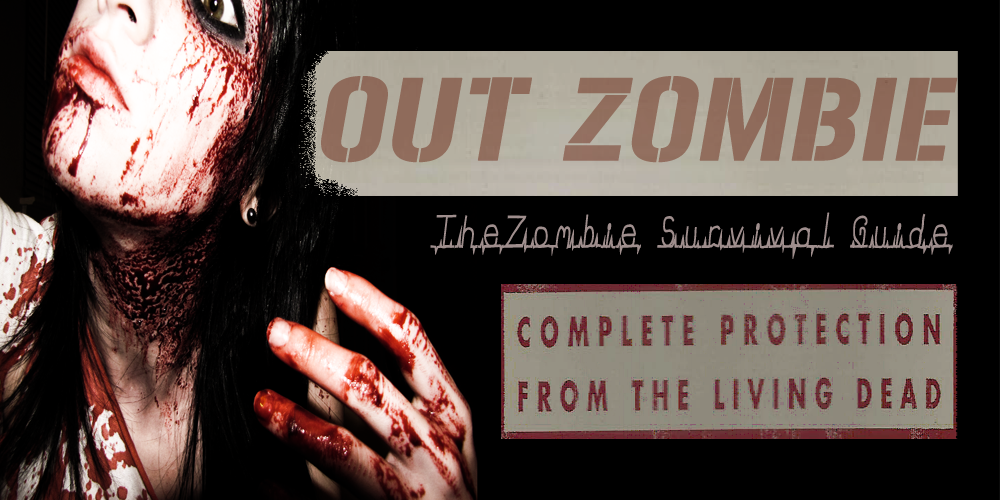At first, this section might seem redundant. However, unlike "On the
Run," which teaches how to use terrain to escape, this will teach you
how to use it to hunt. This time yon are not simply passing through
your environment as quickly, quietly, and easily as possible. As a
hunter, you are here to reclaim this land-hold it, sweep it, cleanse it
until every trace of the undead is gone. This section includes only
information necessary to do just that.
1. FOREST
When hunting, watch for freshly eaten carcasses. Try to determine if
the predator was an animal or a zombie. Also, use the trees to extend
your visibility: Each one can serve as a lookout post or sniper platform.
Set fires only as a last-ditch effort.
2. PLAINS
Vast, open areas provide great visibility, allowing full use of longrange
sharpshooting weapons. One team of five with adequately
sighted rifles and plenty of ammunition can clear several square miles
in the course of a single day. Of course, great visibility allows the
undead to see you as readily as you see them. Hunter groups operating
on plains or prairie have reported being sighted and stalked by
ghouls from as far as ten miles away. Another slight hut still potential
danger is posed by the odd zombie who may be lying in the tall grass.
Undead who have lost their legs or had their spinal columns severed
can remain undetected until it is too late. If your team is traveling
through tall grass, travel slowly, watch the ground, and listen for any
rustling or moans.
3. FIELDS
Unsuspecting hunters have chased zombies through a field only to be
grabbed by another one lurking inches away! Unless you are ordered
to protect the harvest, or the food itself is of vital importance, this is
one case in which fire should be used first. Although almost every
other word in this hook stresses the control of incendiary warfare,
common sense dictates that no human life is worth an acre or two of
maize.
4. TUNDRA
One potential danger, not experienced in other environments,
is that of a mulltigenerational outbreak. Because of
cold weather's preservative .
ability, zombies may remain
frozen for decades. When
thawed, they will join the
ranks of the recently reanimated
and, in some cases, can re-infect an entire area. Frozen tundra,
more than any other environment, requires not only a tireless search
but a heightened alert status during the next year's spring thaw.
5. HILLS
Rolling terrain can he as treacherous and pose as great a threat from
zombies as it can from any human enemy. If possible, always take the
high ground and hold it. This allows greater visibility for you. As crazy
as this sounds, remember that ghouls have limited dexterity. Apply this
fact to their climbing skills, and what you have is a mass of zombies
struggling unsuccessfully to get up the slope while you pick them off
one by one.
6. DESERT
The problems discussed in "On the Run" are doubled when operating
in a desert. Unlike the escapee, your team of hunters will be out during
the brightest, hottest, most excruciating part of the day. Make sure
each hunter is well supplied with water and antisunstroke accessories.
Combat, unlike travel, will require more energy and therefore increase
the risk of dehydration. Do not ignore the signs. One incapacitated
member can cripple an entire team, allowing the undead to quickly
turn the tables on you. Losing touch with your supply base, becoming
isolated even for a day, takes on a whole new meaning in this lifethreatening
environment.
7. URBAN
If the goal were only to kill zombies, an urban area could simply be
bombed or burned to the ground. That would "secure" it, but where
would the survivors live with their homes a pile of rubble? Urban combat
is the most difficult for a variety of reasons. For starters, it takes
the longest amount of time because every building, every room, evely
subway tunnel, every car, every sewer pipe, every nook and cranny of
this massive maze must be searched. Chances are, given a city's imporThe
tance, your civilian group will be working side by side with government
forces. If this is not the case, however, be extremely cautious.
Always think conservatively when it comes to team members, time,
and resources (food, water, ammo). Cities have a way of swallowing
them all up.
8. JUNGLE
This is a close-combat nightmare. Sniper rifles and other long-range
weapons such as crossbows will be next to useless. Equip your team
with carbines andlor shotguns. Machetes must be carried by each
hunter, both for clearing foliage and for hand-to-hand combat. Use of
fire will not be an option because the intense moisture will dampen
most attempts to start one. Keep your team together at all times, be
hyperalert, and listen carefully to the sounds of nearby wildlife. As
with forests and swamps, they will be your only warning system.
9. SWAMP
Many of the aspects of jungle warfare can apply to marshes as well.
They may not always be as hot or as dense, but this does not mean they
are any safer. Pay close attention to the water. All equipment and tactics
applied to subaquatic warfare and discussed later will most likely
be employed in this scenario as well.





No hay comentarios:
Publicar un comentario